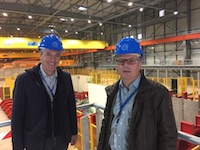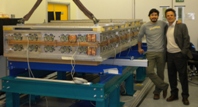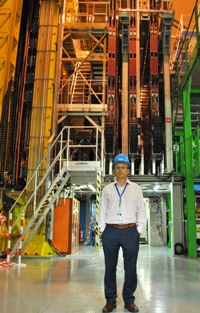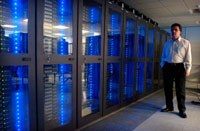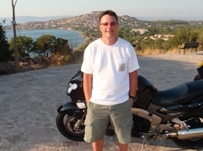Chair of Experimental Particle Physics
1-page CV
my videos
ProtoDUNE at CERN
Liverpool Particle Physics
DUNE
SBND
T2K
ARIADNE
Institute of Physics
European Physical Society
American Physical Society
STFC
Interactions
Symmetry
The Particle Adventure
CERN
Fermilab
J-PARC
SURF
APS Journals
arXiv
Particle Data Group
DUNE on YouTube
T2K Near Detector on YouTube
T2K events on YouTube
BaBar on YouTube
MY PUBLICATIONS
Highly Cited 100+
Neutrinos
T2K
Rho+ Rho-
Charmonium
Dileptons
All my journal papers
my ORCID
my Scopus entry
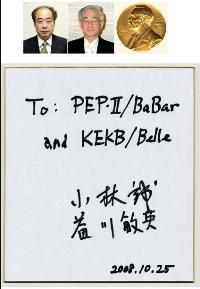

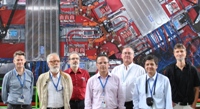
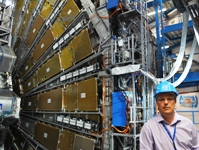

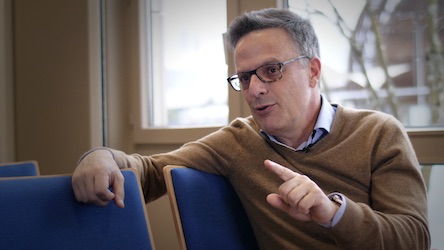
DUNE APA Consortium Leader
Chair of ECSG, FAIR
Member of:
DUNE Executive Board
DUNE FD Technical Board
US P5 2023
ProtoDUNE-SP co-coordinator / co-spokesperson of CERN NP04 (2016-2018)
Head of Department of Physics, University of Liverpool (2014-2016)
Chair of the LHC Resources Scrutiny Group, CERN (2013-2017)
Project Manager of T2K-UK (2007-2011)
Analysis co-coordinator of T2K-ND280 (2009-2011)
ECAL Convenor of T2K-ND280 (2007-2012)
Past member of:
CERN LHC Upgrades Cost Group (2013-2017)
CERN SPS Committee (2009-2011)
Scientific Council of DPhP IRFU/CEA (2016-2022)
Governing Board, University of the Aegean
Scientific Council, GDR Neutrino (France)
International Scientific Advisory Committee of INPP, Demokritos
STFC Particle Physics Grants Panel (2004-2007)
IOP HEPP Committee (2002-2006)
Executive Board, BABAR collaboration (2005-2010)
NATURE editorial about the T2K publication on CP Violation in neutrinos (2020)
Award of the 2016 Breakthrough Prize for Fundamental Physics
T2K announces the definitive observation of muon neutrino to electron neutrino transformation, July 2013
My research and the Physics Nobel Prize 2008
Research Field: Experimental Particle Physics
Particle Physics is concerned with the nature of Matter, Energy, Space, and Time.
Our challenge is to discover what the Universe is made of and how it evolves,
i.e. how did we get here and where are we going. The European Strategy for Particle Physics
2013 update can be found on pages 20-22 of this
CERN brochure. U.S. particle physics is presented here.
My research is driven by three big open questions:
the mechanism responsible for the development of our matter-dominated, suitable for life universe ("where did the anti-matter go?");
the existence of New Physics at very high energy scales which should be detectable through precision measurements of flavor transitions; and
the origin of neutrino mass, which could be related to cosmic inflation, a key step in the development of our universe whose cause is unknown.
I initiated the Liverpool neutrino group in 2003.
Here are my main projects:
T2K (since 2003):
Tokai-to-Kamioka is the first "superbeam" off-axis long-baseline neutrino oscillation experiment.
It uses the pulsed proton beam at the J-PARC facility
in Tokai and the Super-K detector.
The first beam neutrinos were produced at J-PARC in 04/2009,
detected in the on-axis Near Detector
(INGRID) in 11/2009, in the off-axis Near Detector (ND280) in 02/2010,
and in Super-K in 02/2010.
My main construction contribution was the design and delivery of the electromagnetic
calorimeter (ECAL) for ND280, and in terms of physics I have been ND280 Analysis co-coordinator
in the crucial period leading to the electron-neutrino appearance discovery.
I was the Project Manager for the �15M T2K-UK construction project which delivered on time and on budget
the ECAL detector, readout electronics and the DAQ system for the Near Detector, and crucial elements of the
neutrino production facility.
The Liverpool group are working on neutrino interactions with the Near Detector
and we are leading in oscillation (mixing parameters) measurements.
DUNE (since 2013):
We are members of the Deep Underground Neutrino Experiment in the US which will use an intense neutrino beam
from Fermilab and large underground Liquid Argon detectors in South Dakota to search for CP Violation in
neutrinos and to determine the neutrino mass hierarchy. We are active in the development of the single phase LAr TPC technologies for the Far Detector.
One of the crucial elements of this $3B mega-project is the demonstration of technologies and construction methods, and the performance
characterisation of our single phase LAr TPC for the 17 kton deep underground Far Detectors through the 750 kton protoDUNE-SP
detector at CERN (experiment NP04) which I led jointly with Flavio Cavanna (Fermilab).
SBND (since 2013):
The Short-Baseline Near Detector (SBND) will be one of three liquid argon neutrino detectors sitting in the
Booster Neutrino Beam at Fermilab as part of the Short-Baseline Neutrino Program.
MicroBooNE and the ICARUS-T600 are the intermediate and far detectors in the program, respectively.
SBND will record over a million neutrino interactions per year which will be crucial in the study of neutrino oscillations,
including searches for possible sterile states, and will also allow studies of neutrino-argon interactions in the GeV
energy range with unprecedented precision.
We are providing the Cathode Plane for the TPC and we are preparing for physics exploitation.
Previous projects:
BaBar (1997-2010):
I was the Principal Investigator of the
BABAR group at Liverpool. We analysed
data of the SLAC B-Factory to study heavy quark transitions. In 2000-02 we had a leading
involvement in the discovery of CP Violation in the B meson system. We
pioneered the measurement of the angle alpha of the Unitarity Triangle using
the decay (B0 to rho+ rho-). We were involved in the first observations and CP violation measurements in
rare B decay channels (pipi, Kpi) and also in the observation of D-meson
mixing. We have held various positions of responsibility
within the collaboration. Our main contribution pre-1999
was the design and construction of the CsI(Tl) endcap electromagnetic
calorimeter.
LAGUNA-LBNO (2011-2013):
A European Design Study for an underground facility for neutrino science and nucleon decay.
Liverpool focused on the design of the Near Detector for the long baseline neutrino oscillation
programme. We developed the model and simulation tools for a high-pressure Argon TPC which is
also used in DUNE near detector studies. Funded through FP7.
MODES-SNM (2012-2015):
An EU FP7-funded programme for the delivery of a modular detector system for the detection of Special Nuclear Materials.
KM3NeT (2004-2010):
A European Design Study for a deep-sea
ultra high energy cosmic neutrino telescope in the Mediterranean.
CPLEAR (1987-1997):
CP violation with tagged neutral Kaons at CERN. I achieved the first direct observation of the time-dependent decay rate asymmetry
between originally tagged neutral kaons and their antiparticles, and I worked on the CPT and Lorentz violation searches.

Department of Physics
Particle Physics Group

Greece in Greek
Greek Online Radios
Lesvos wikipedia
